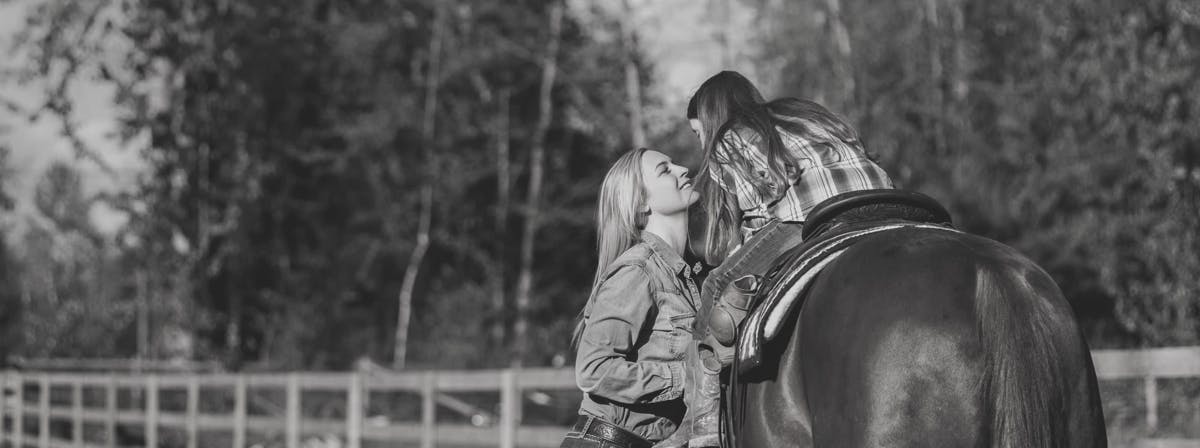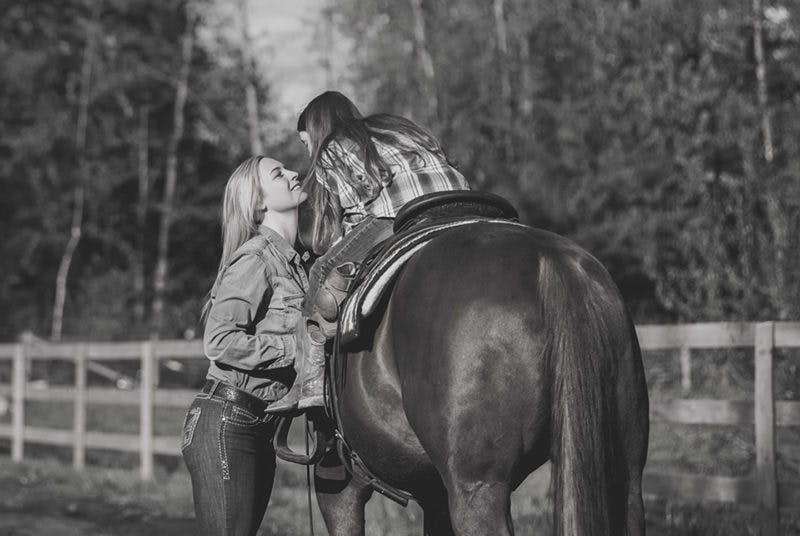While the first animals that come to mind when you think of acreage living are probably dogs, horses, cats, and maybe even chickens, there is a new fuzzy friend that’s all the buzz on the farm…
Bees!
That’s right, backyard beekeeping is a hobby that has soared in recent years, and for good reason. With wild honeybee populations dying off in record numbers, many people have taken it upon themselves to save this creature by building backyard colonies of their own.
Interested in learning what all the buzz is about? Been thinking about creating a colony on your own property? Let’s dive into what it takes to become a backyard beekeeper!
The Benefits of Beekeeping
First things first, why would anyone want to keep bees on their property? I mean, they’re a pest, right? The kind of insect you shoo away from your picnic?
Well yes, bees do in fact sting. And some of you may even be quite allergic to those stings (and if you are allergic, let’s stop right here – backyard beekeeping is not for you). But bees are far from pests. In fact, there are one of the most beneficial members of the animal kingdom, which you will soon see after establishing your hive.
When you join the ranks of a backyard beekeeper, you’ll become the recipient of several major perks. First, you’ll have immediate access to the freshest, most delicious honey you have ever tasted. Nature’s original sweetener, I don’t have to tell you that honey not only tastes great, but it had loads of vitamins and minerals as well, and is even a common ingredient in many home remedies. From soothing your cough to sweetening your tea, fresh honey will become a staple of your home when you start your backyard hive.
Another great benefit of a backyard hive is wax. Worker bees break down the sugar content of the honey in their hive and turn it into wax, which they use to build their hives. As part of your routine beekeeping, you’ll be able to harvest this wax and use it for a variety of purposes, including homemade candles, a cure for dry hair, and even your own lip balms and cosmetics.
Finally, backyard beekeeping does wonders for your yard. With an entire hive working to pollenate the plants on your property, your garden and flower beds will look better than they ever have before. Talk about low-cost landscaping!
It’s clear that there are many benefits to becoming a backyard beekeeper. But how do you get started?
How to Become a Backyard Beekeeper
Getting started with backyard beekeeping is not as complicated as one might think. Like any hobby, there are ways to jump in too fast, too soon (and spend a bunch of money in the process). But for the novice bee enthusiast, it’s best to keep things simple and follow these steps:
Build the Hive (Apiary)
That big white box full of bees? It’s called an apiary, and it will become the home and hive for your colony.
Traditional Apiaries are pretty simple structures, and vary based upon location, size of the colony, and a host of other factors. For a first-time beekeeper, it’s recommended that you purchase one of the widely available apiary kits online. These kits come with everything you need to get started, including the exterior apiary box, the interior frames (where bees build their honeycomb), foundations and more.
Upon arrival, the construction of your apiary should take no more than an afternoon. Resembling a small filing cabinet, the frames slide into corresponding slots inside the apiary. Most kits will also include a foundation for your frames, which is a wax-based honeycomb that slots into each frame, giving the bees a “foundation” upon which to start producing their own honeycomb. This foundation will greatly increase the speed and yield of wax and honey from your first colony.
One important thing that will not be included in your kit is a stand. Like anything else wooden and outdoors, your apiary needs to be protected from the elements – specifically ground moisture. A simple stand made out of cinder blocks or bricks should do just fine. Just make sure you give your hive at least 18” of clearance off the ground.
Get the Equipment
Once your hive kicks into gear, you’ll need to routinely check in on them to ensure they’re healthy, and to extract the honey and wax. If the idea of getting swarmed and stung is not your thing, there are a few tools that’ll make the job easier:
Beekeeper’s Veil
The iconic headgear of beekeepers everywhere, this veil is an inexpensive way to keep your head sting free!
Beekeeper Suit/Jacket
While thick pants and an old jacket will do just fine, if you want to look the part, a beekeeping suit might be the best route to go. These suits are made from either heavy canvas or ventilated mesh, and do wonders in protecting your body from stings. But be forewarned – these suits can become brutally hot during the summer! Make sure you hydrate before you head out to the hive.
Honey Knives, Smokers, Scrapers, Extractors & Other Assorted Tools
As you move through your first harvest, you’ll find times when you might need specialized tools such as honey knives or wax scrapers. While there are many beekeeping-specific tools available for sale (and some that are quite necessary, like smokers), oftentimes you can find a tool in your existing toolkit that does the job just fine. No need to invest in extra equipment when it’s not needed – especially when you’re just getting started!
Buy the Bees
With your apiary and your equipment ready to go, it’s time to start populating your colony. Believe it or not, you can actually get your busy bees shipped right to your front door! A starter pack of honeybees and one queen is called a “Nuc”, and can be purchased relatively inexpensively online. Just be sure to check with local regulations, as they may affect what types of bees you can legally purchase (more on local regulations below).
Start Keeping!
The best way to learn about beekeeping is to dive right in! Thankfully, there are many great forums, websites, and books available online. A quick Google search should provide you with everything you need to get things buzzing in your backyard.
Rules and Regulations
While over time you may come to think of your colony as a huge group of fuzzy backyard friends, it’s important to remember that the bees you keep on your property are in fact wild insects. Like other wild animals, there are several rules and regulations you’ll need to follow in order to ensure you’re beekeeping lawfully.
Accordingly to British Columbia’s Animal Health Act – Bee Regulations, there are several steps you’ll need to take if you want to keep an active hive in your backyard. First and foremost, you will have to get yourself registered as a beekeeper with the Department. You must also register each and every apiary on your property, and mark each with your name, contact information, and your producer number from the Department of Animal Health.
Once registered, you have the green light to start your colony. However, it’s important that you read all of the regulations in the Animal Health Act, as there are quite a few restrictions on beekeeping equipment, where you can source your bees, and much more. There are also regulations regarding beekeeping activities on your property, even if you are not the beekeeper. So, before you let a friend or family member set up their apiaries on your property, make sure you read the rules together, and that the beekeeper has their licenses in order!
While it may seem like a lot of work, beekeeping is actually a low-investment, low-stress, high-reward habit. From pounds and pounds of delicious, fresh honey right in your backyard, to strong, healthy plants and flowers across your property, bees provide incredible benefits to backyard beekeepers. And best of all, it’s actually quite a bit of fun!
So, throw on your bee veil, fire up your smoker, and start buzzing with the joy of backyard beekeeping.



